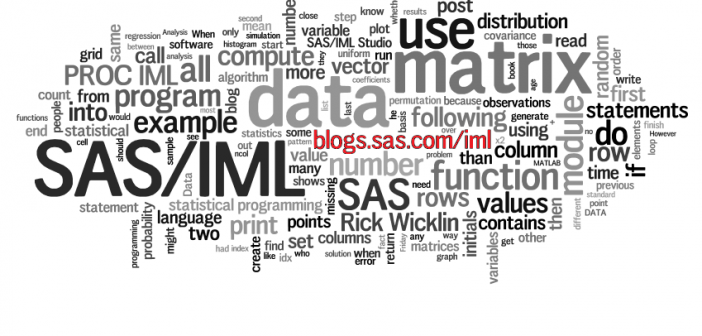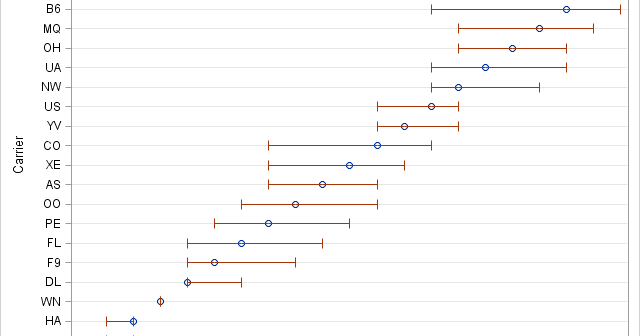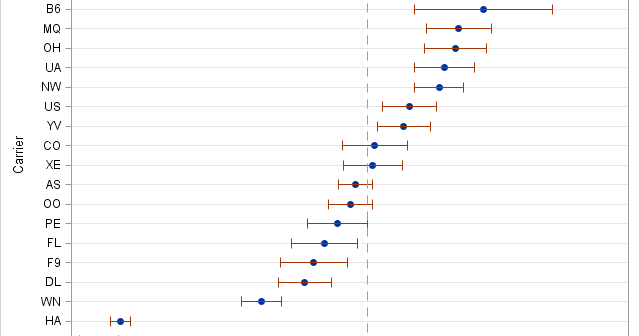The DO Loop
Statistical programming in SAS with an emphasis on SAS/IML programs
Editor's Note: This article was an April Fool's prank from 2011. The entire article is fake. Today, SAS, the leader in business analytics announces significant changes to two popular SAS blogs, The DO Loop (written by Rick Wicklin) and The SAS Dummy (previously written by Chris Hemedinger). The two blogs

This week, I posted the 100th article to The DO Loop. To celebrate, I'm going to analyze the content of my first 100 articles. In December 2010, I compiled a list of The DO Loop's most-read posts, so I won't repeat that exercise. Instead, I thought it would be interesting

In a previous post, I described how to compute means and standard errors for data that I want to rank. The example data (which are available for download) are mean daily delays for 20 US airlines in 2007. The previous post carried out steps 1 and 2 of the method

When you create a character matrix in SAS/IML software, the initial values determine the number of characters that can fit into any element of the matrix. For example, the following statements define a 1x3 character matrix: proc iml; m = {"Low" "Med" "High"}; After the matrix is defined, at most

I recently posted an article about representing uncertainty in rankings on the blog of the ASA Section for Statistical Programmers and Analysts (SSPA). The posting discusses the importance of including confidence intervals or other indicators of uncertainty when you display rankings. Today's article complements the SSPA post by showing how

I recently blogged about how to eliminate a macro loop in favor of using SAS/IML language statements. The purpose of the program was to extract N 3x3 matrices from a big 3Nx3 matrix. The main portion of my PROC IML program looked something like this: proc iml; ... do i=0
